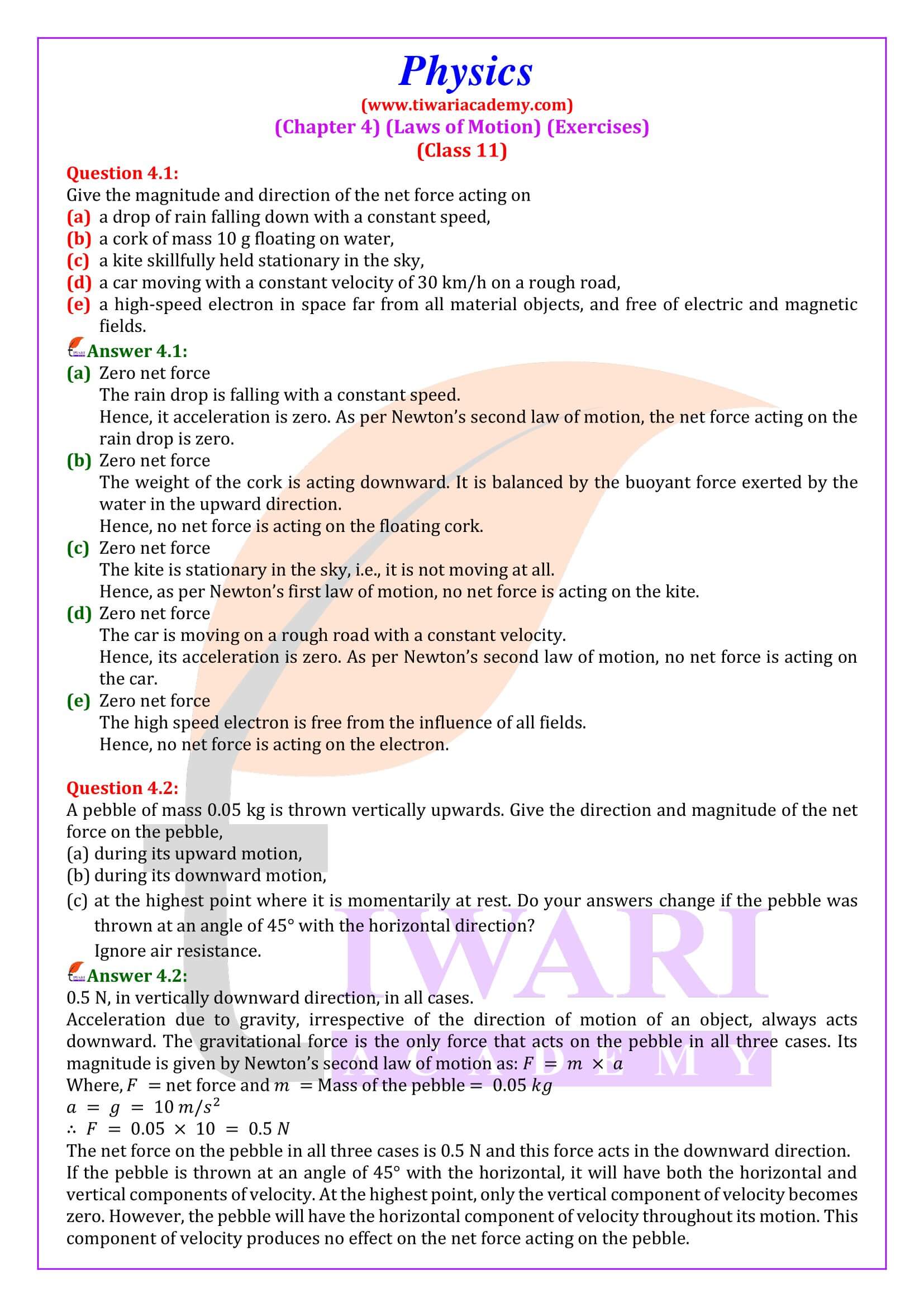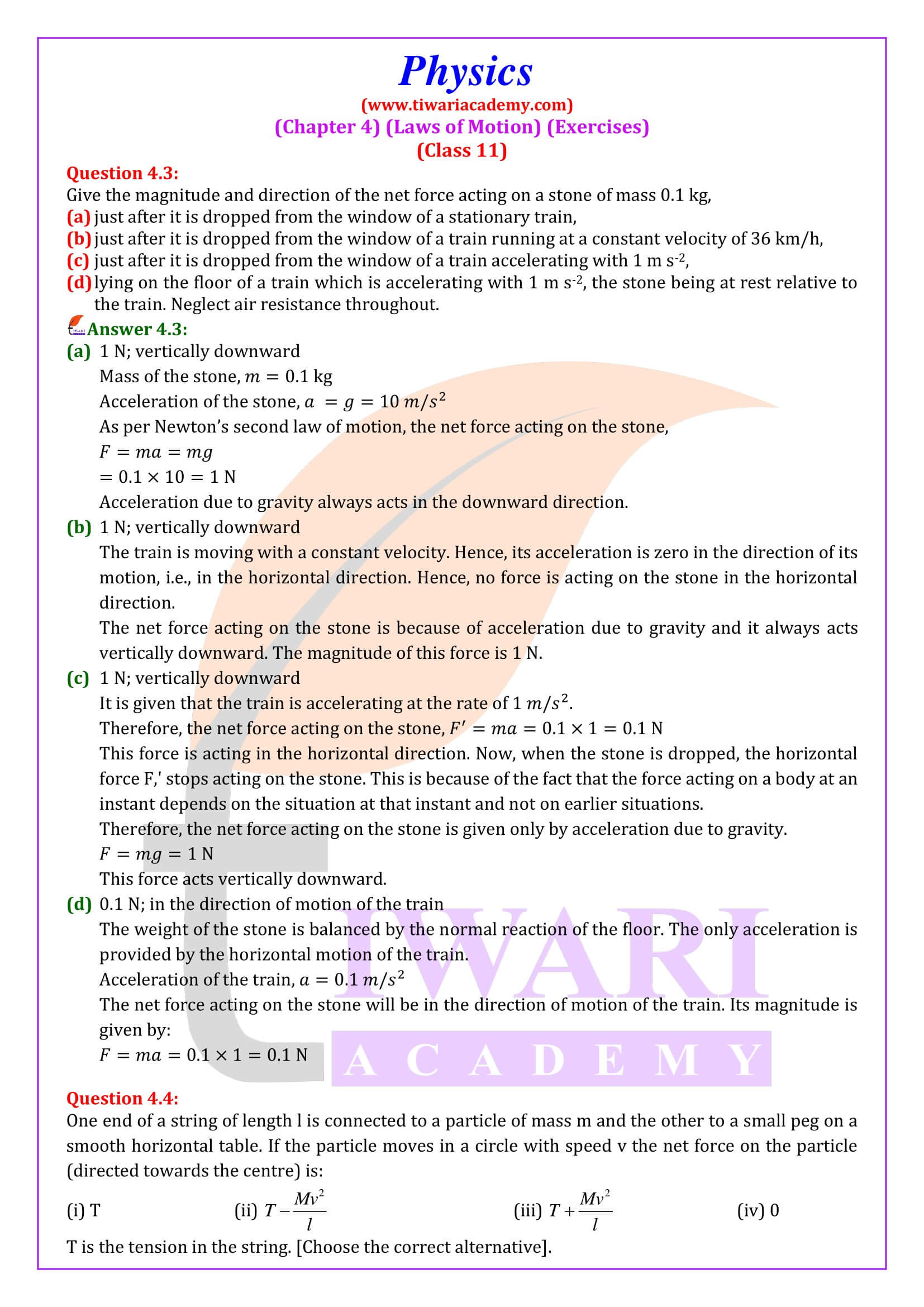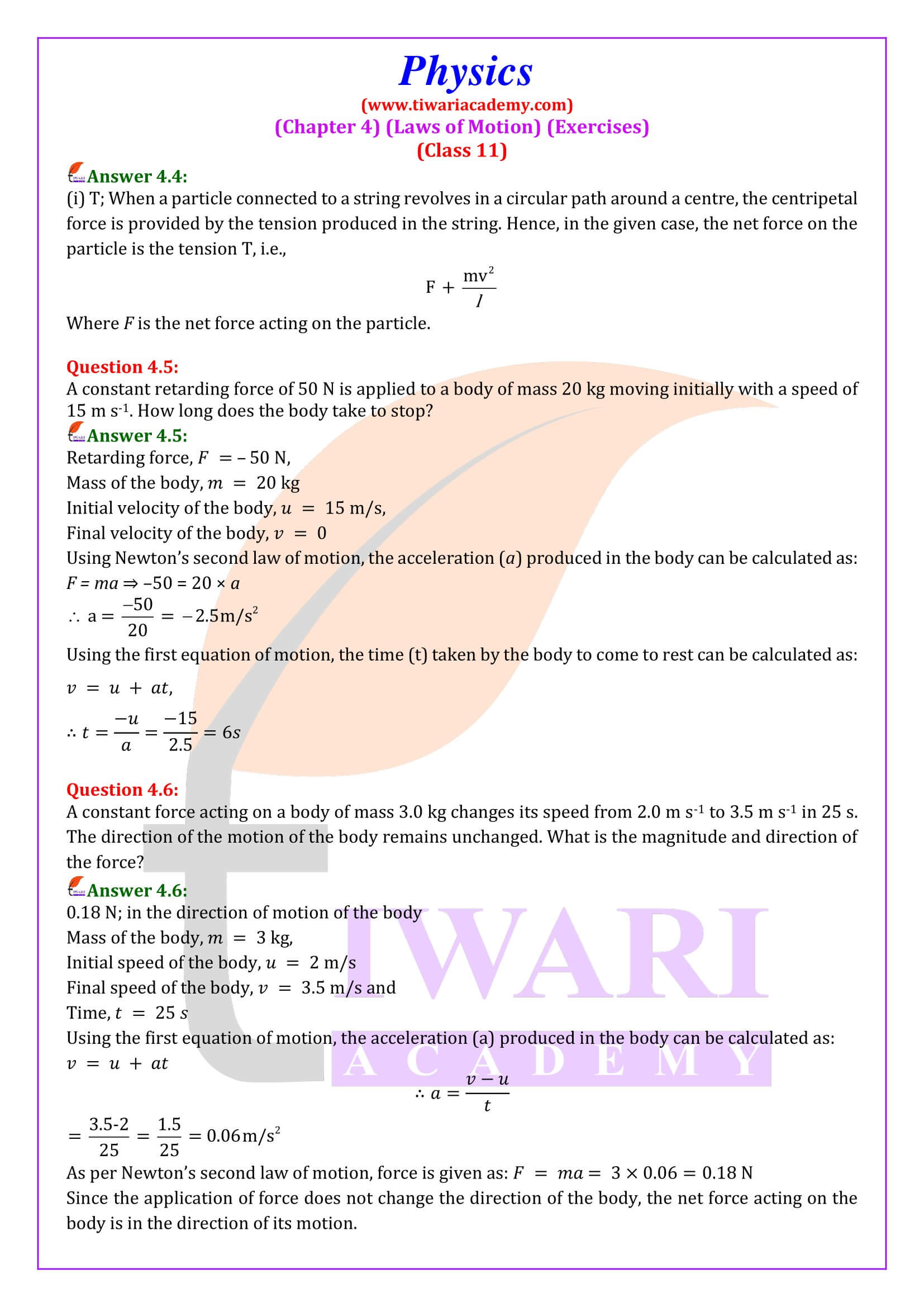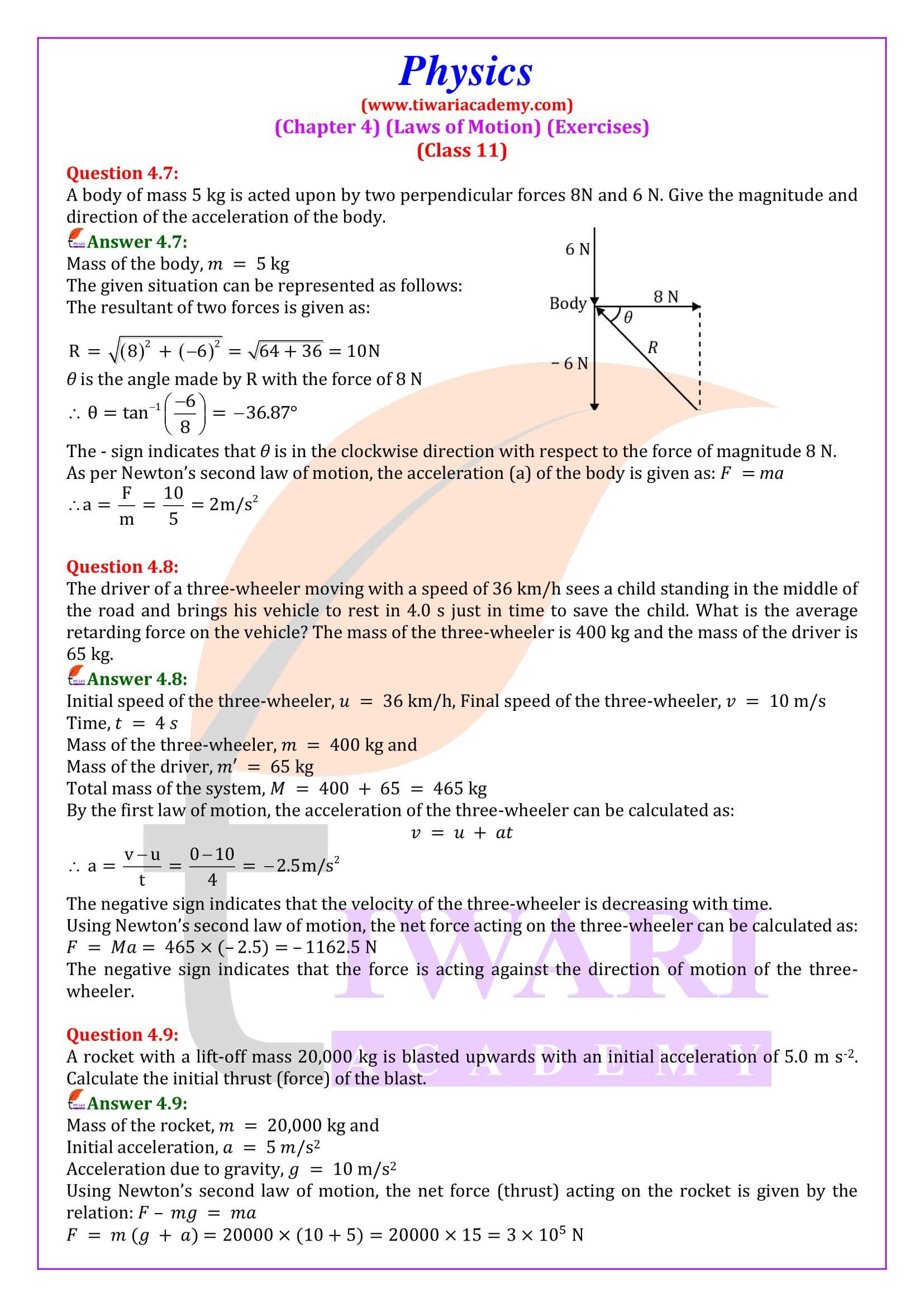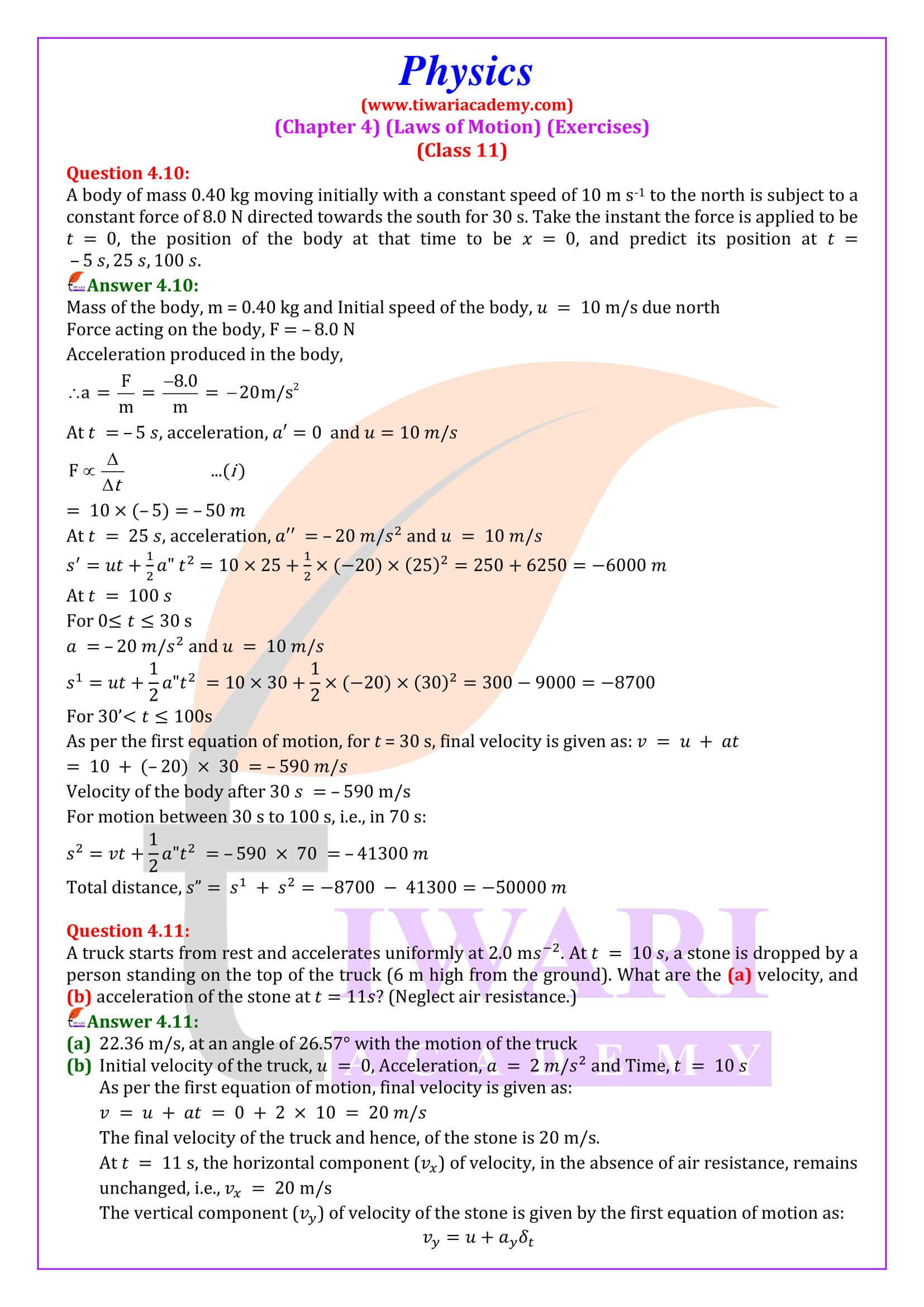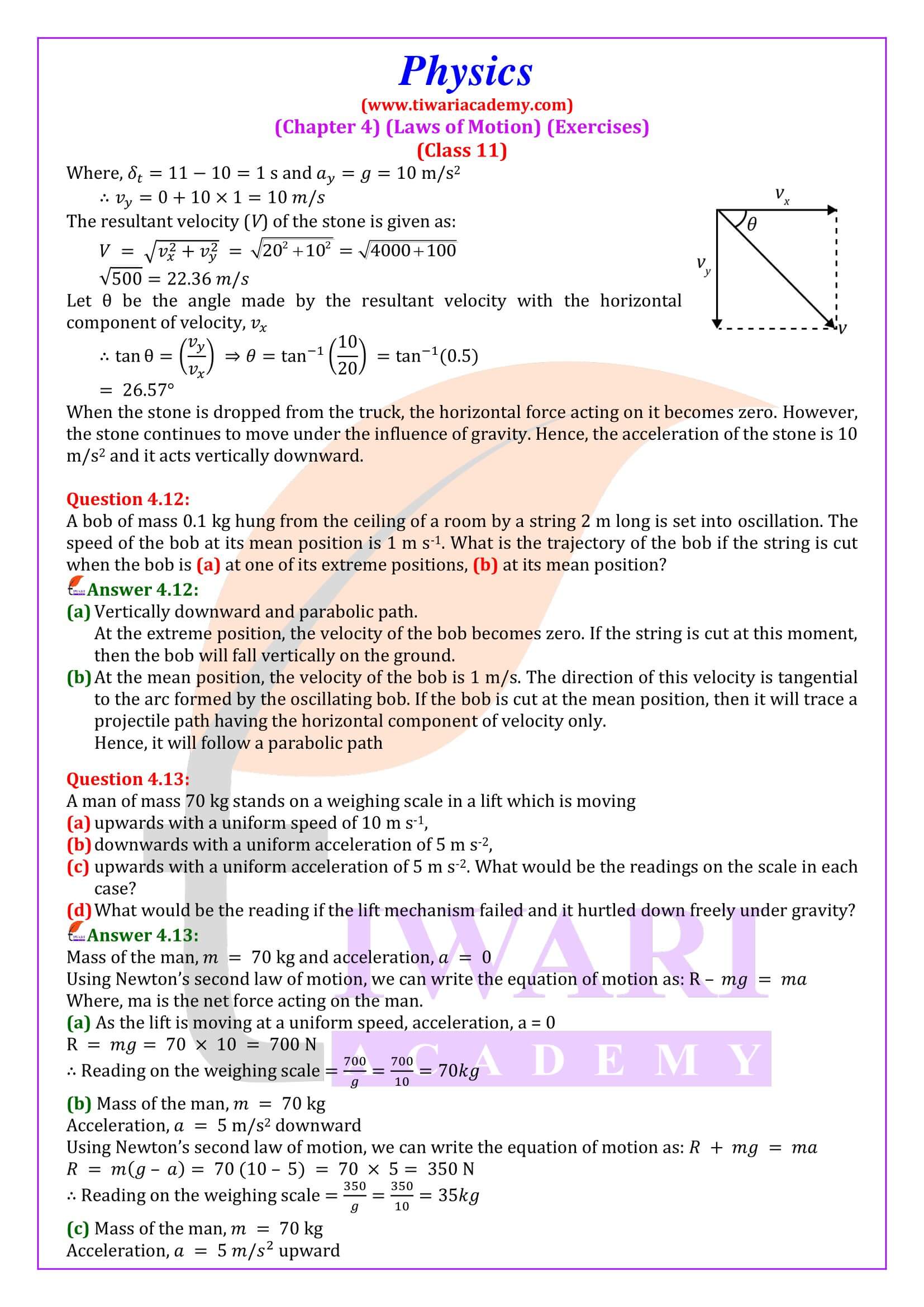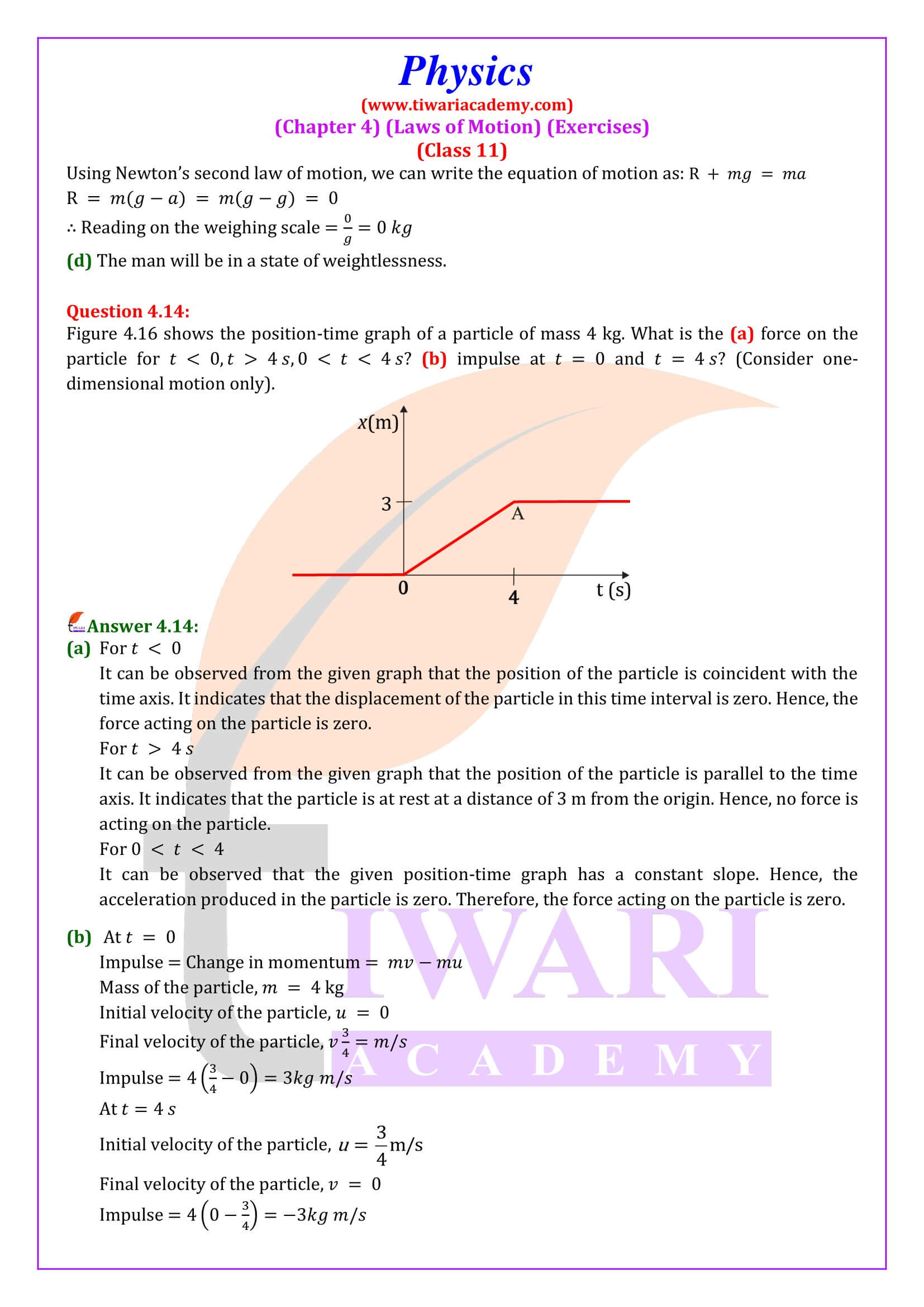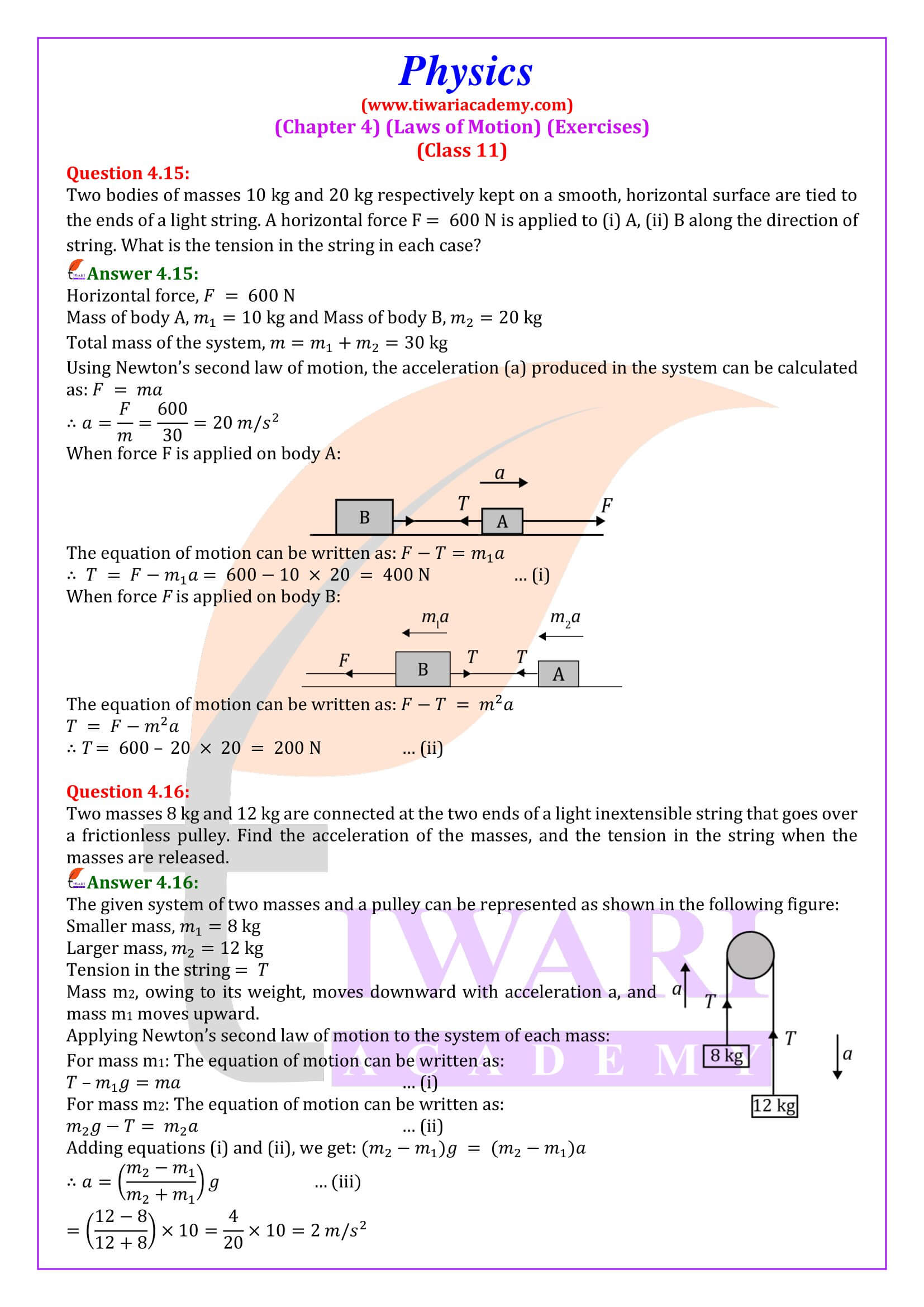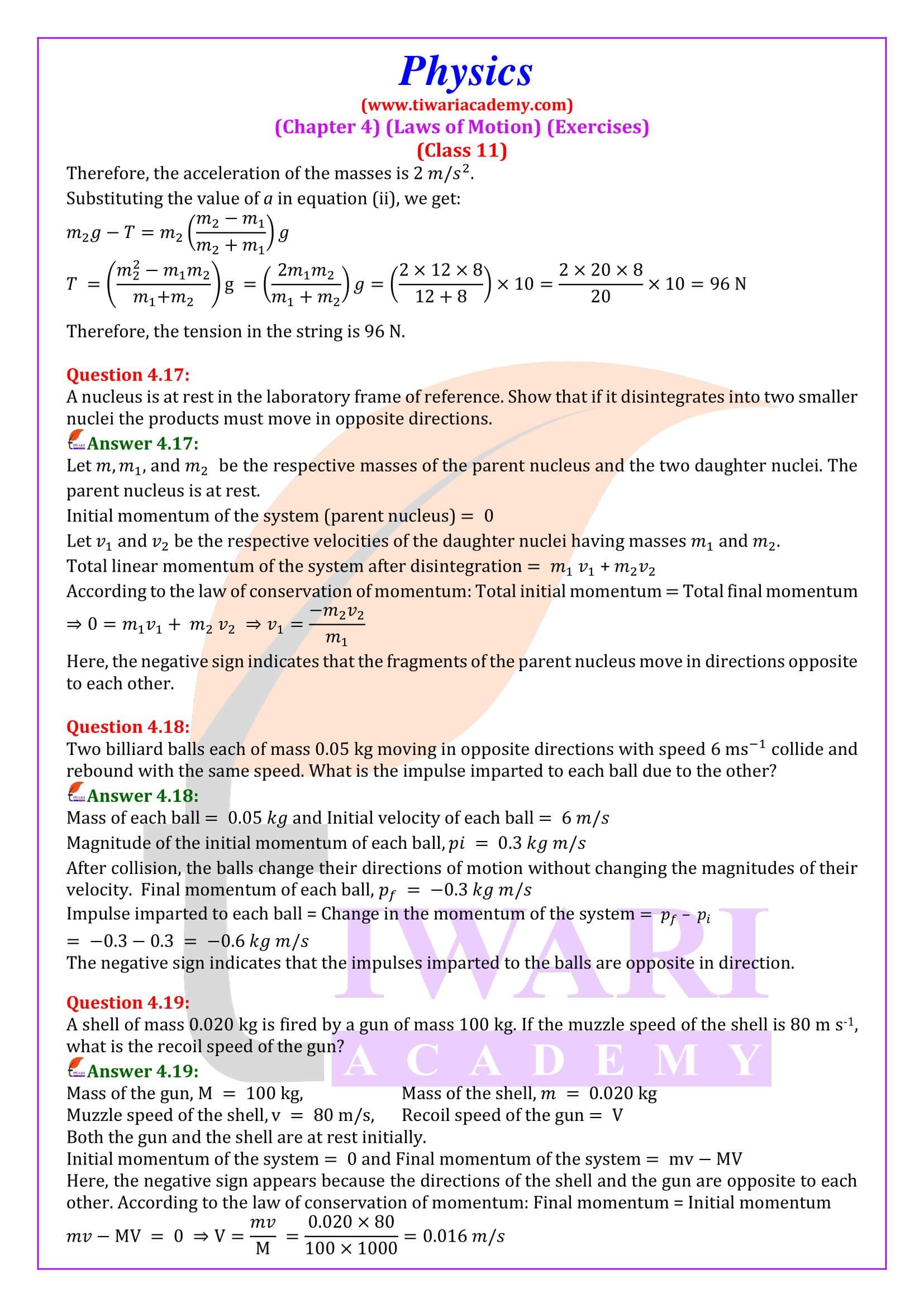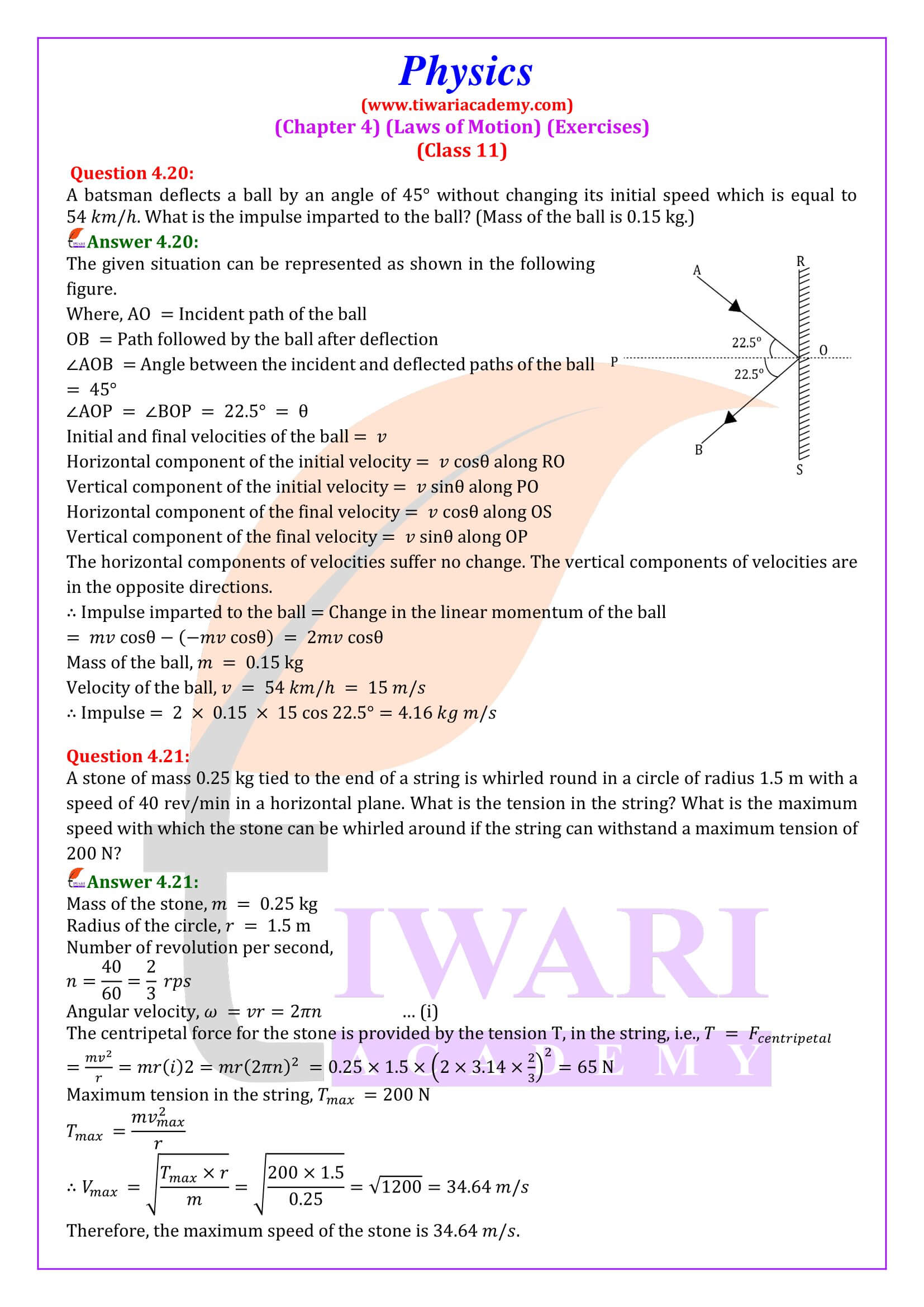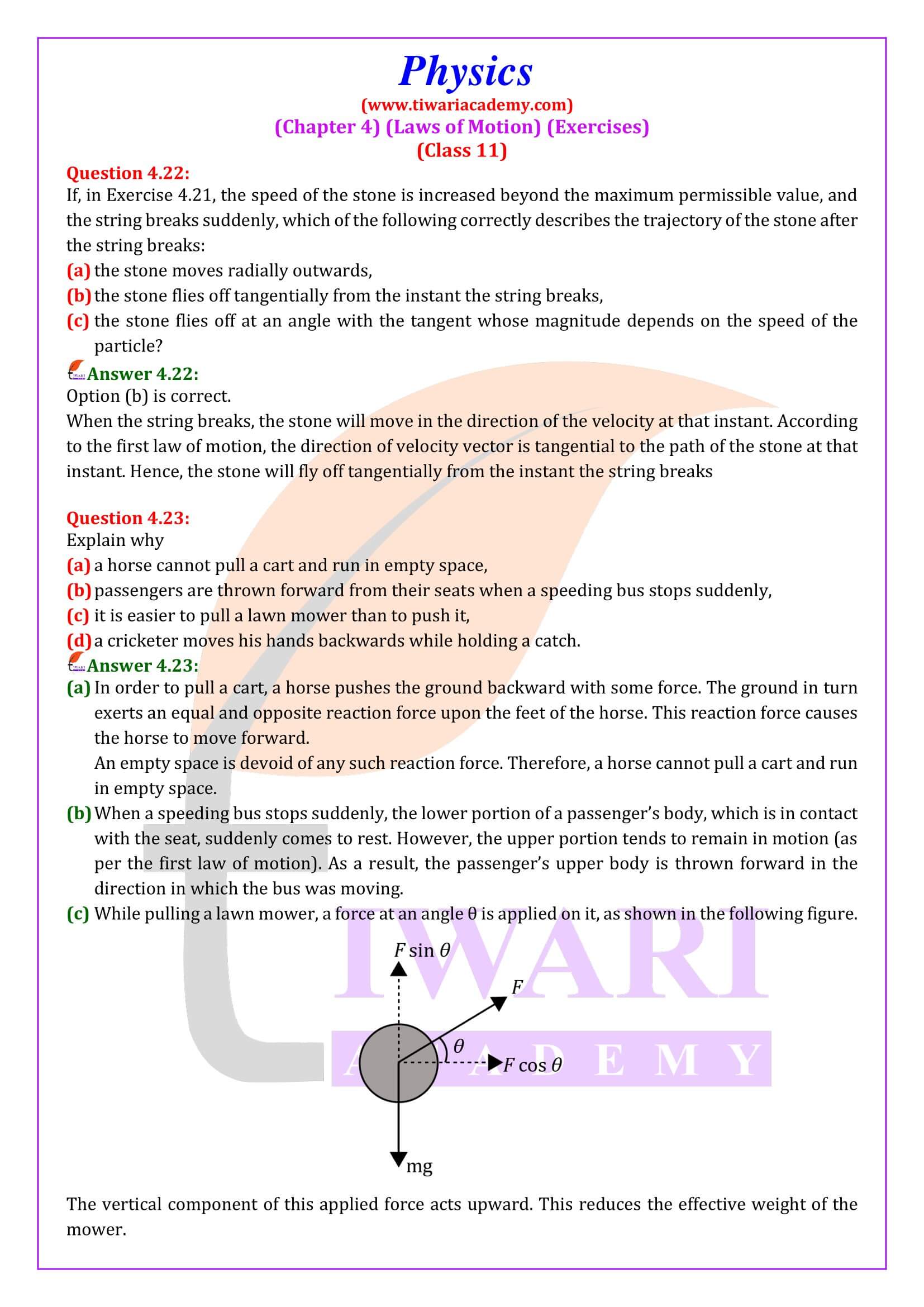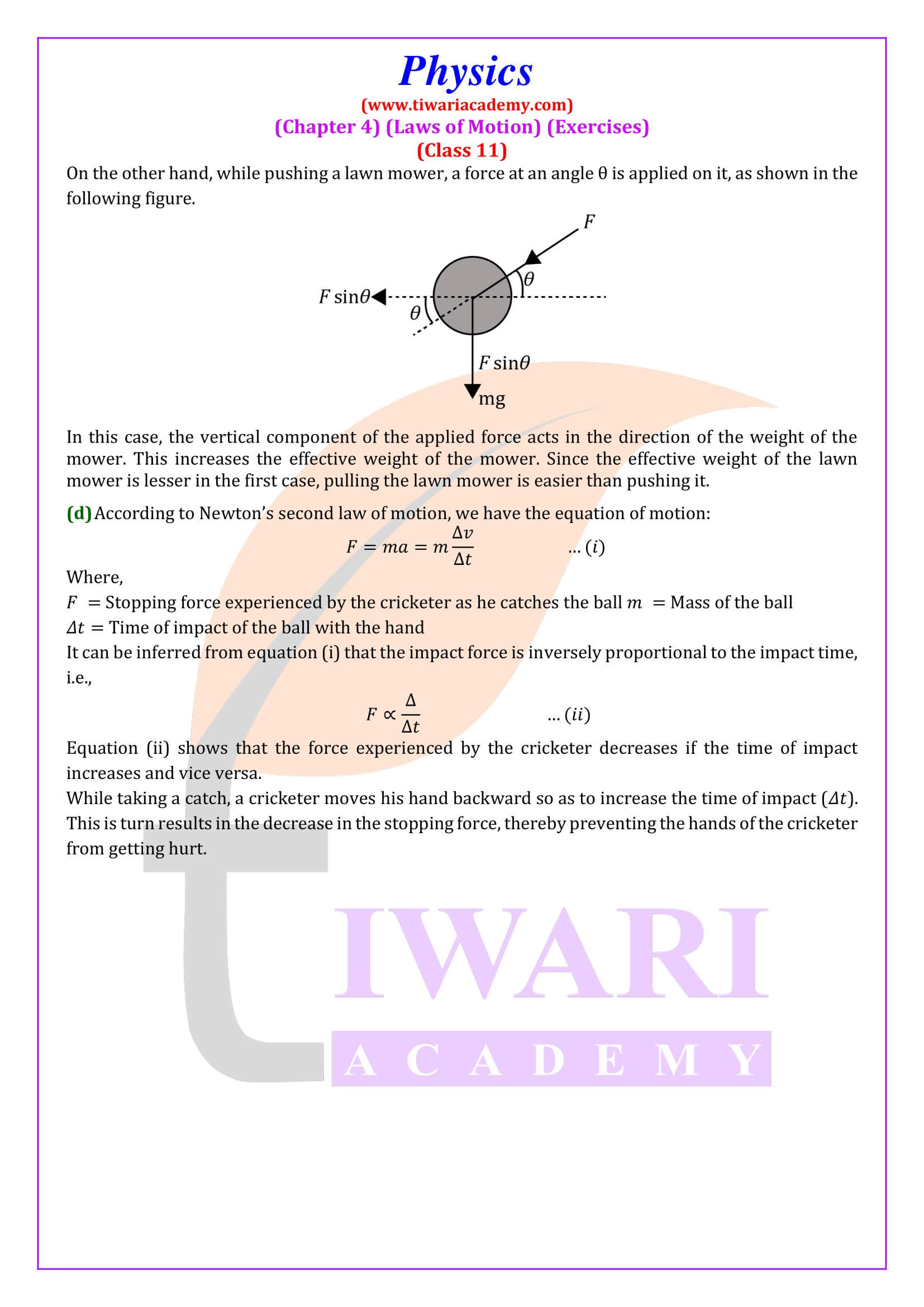NCERT Solutions for Class 11 Physics Chapter 4 Laws of Motion in Hindi and English Medium exercises and additional exercises question answers for session 2024-25 with Extra multiple choice questions. Begin by thoroughly understanding the concepts of each important topic given in 11th Physics chapter 4. Read the NCERT textbook chapters related to these topics and take notes. Focus on grasping the fundamental principles and key equations.
Class 11 Physics Chapter 4 Laws of Motion Question Answers
Class 11 Physics Chapter 4 MCQ
A block of mass M is placed on a flat surface. A force is applied to move it parallel to the surface. The frictional force f developed is proportion to the
What is the frame reference attached to a satellite of the earth is
A block of wood is placed on a surface. A force is applied parallel to the surface to move the body. The frictional force developed acts
Inside the nucleus, two protons are held together by force which overcomes the repulsion. This force is called
Newton’s First Law of Motion
Newton’s laws are usually expressed in terms of the mass of a point or a particle, that is, an object of negligible volume. It is a reasonable approximation of real objects when the movement of internal parts is negligible and when the distance between objects is much larger than the size of each object. For example, the Earth and the Sun can be approximated as points when the orbits of the former around the latter are taken into account, but not when animals active on their surfaces are taken into account.
The mathematical description of motion or kinematics is based on the idea of specifying a position using numerical coordinates. The simplest case is one-dimensional, that is, when the object is constrained to move only in a straight line. Its position can then be given by a number indicating its position relative to a chosen reference point.
For example, if an object can slide freely along a track that runs left to right, its position can be specified by its distance to a convenient zero point, or by a negative number for position relative to the elevator and a positive number for the position at the elevator origin. Motion is represented by a function that assigns a values of all position coordinates to each value of the time variable.
Class 11 Physics Chapter 4 Multiple Choice Questions
A passenger sitting in a bus moving at uniform speed, feels pushed backward whenever the bus is accelerated forward. This type of force is called
A passenger in a moving bus is thrown forward when the bus is suddenly stopped. This is explained
A machine gun fires a bullet of mass 40g with a velocity of 1200 ms-1. The man holding it can exert a maximum force on 144N on the gum. How many bullets can he fire per second at the most?
The mass of a body which is equal to the ratio of the force acting on a body to the acceleration produced in the body is
Newton’s Second Law of Motion
Newton’s second law of motion applies to the behavior of all existing force imbalances. The second law states that the acceleration of an object depends on two variables, the resultant force acting on the object increases and the acceleration of the object increases. Increasing the mass of the object with decrease the acceleration.
The momentum of an object is equal to the product of its mass and its velocity, and momentum-like velocity is a vector that has both magnitude and direction. The force exerted on an object can change the amplitude of the momentum or its direction. Newton’s second law is important tools for almost all the chapters of class 11 physics. For objects of constant mass m, it can be written in the form F = ma, where F and a are both vector quantities. If an object is subjected to a resultant force, it will accelerate according to the equation. Conservatively, if an object is not accelerated, no net force acts on it.
Newton’s Third Law of Motion
A force is a pushing or pulling force acting on an object due to its interaction with another object. Force results from interactions. According to Newton’s third law of motion, whenever bodies A and B interact, they exert a force on each other. If we sit somewhere on any object, our body exerts a downward force. At the same time the object exerts an upward force on our body.
This law represents a certain symmetry in nature. Forces always come in pairs, and one object cannot exert a force on another without feeling the force itself. We sometimes loosely call this law the action-reaction force, where the force applied is the force of action and the force experienced as a result is the force of reaction.
For example, a swimmer uses his feet to accelerate the wall of the pool in the opposite direction he is pushing. The wall exerts equal and opposite forces on the swimmer. You might think that two equal and opposite forces would cancel each other out, but they don’t because they act on different systems. In this case, two types of systems can be studied: bathers or walls.
What main concepts are covered in Chapter 4 of NCERT Class 11 Physics Solutions?
Class 11 Physics Chapter 4 solutions covers basic concepts based on Newton’s Laws. These concepts can be associated with almost all activities of our daily life. 11th Physics chapter 4 addresses one of the most fundamental and important concepts taught in grade 11 CBSE. The NCERT solution for class 11 Physics Chapter 4 will help students answer questions based on the laws of motion and other related concepts in this chapter.
How to perform well in 11th Physics Chapter 4?
A good grade in Class 11 Physics Chapter 4 simply means having a good understanding of all the concepts taught throughout the chapter and being able to use that knowledge to solve any problems based on the chapter. Students should regularly practice and revise everything they learn in school. While preparing for the Grade 11 Physics exam, it can be very helpful to write down important details and formulas. Numerical covers about 20% of the question papers, so must practice numerical questions given in chapter 4 of 11th Physics.
Which one is the most important topic of Chapter 4 of 11th Physics?
Class 11 Physics Chapter 4 deals with Laws of Motion, which is considered as one of the most important topics in mechanics. It is comprise of Newton’s three laws, which are certainly the most important topics covered in chapter 4 of 11th Physics. However, there are many other topics that are very important and should be focused on while preparing for the 11th grade physics exam. The main topics are momentum and its conservation, circular motion and its variations and problem solving in other sections of mechanics.
